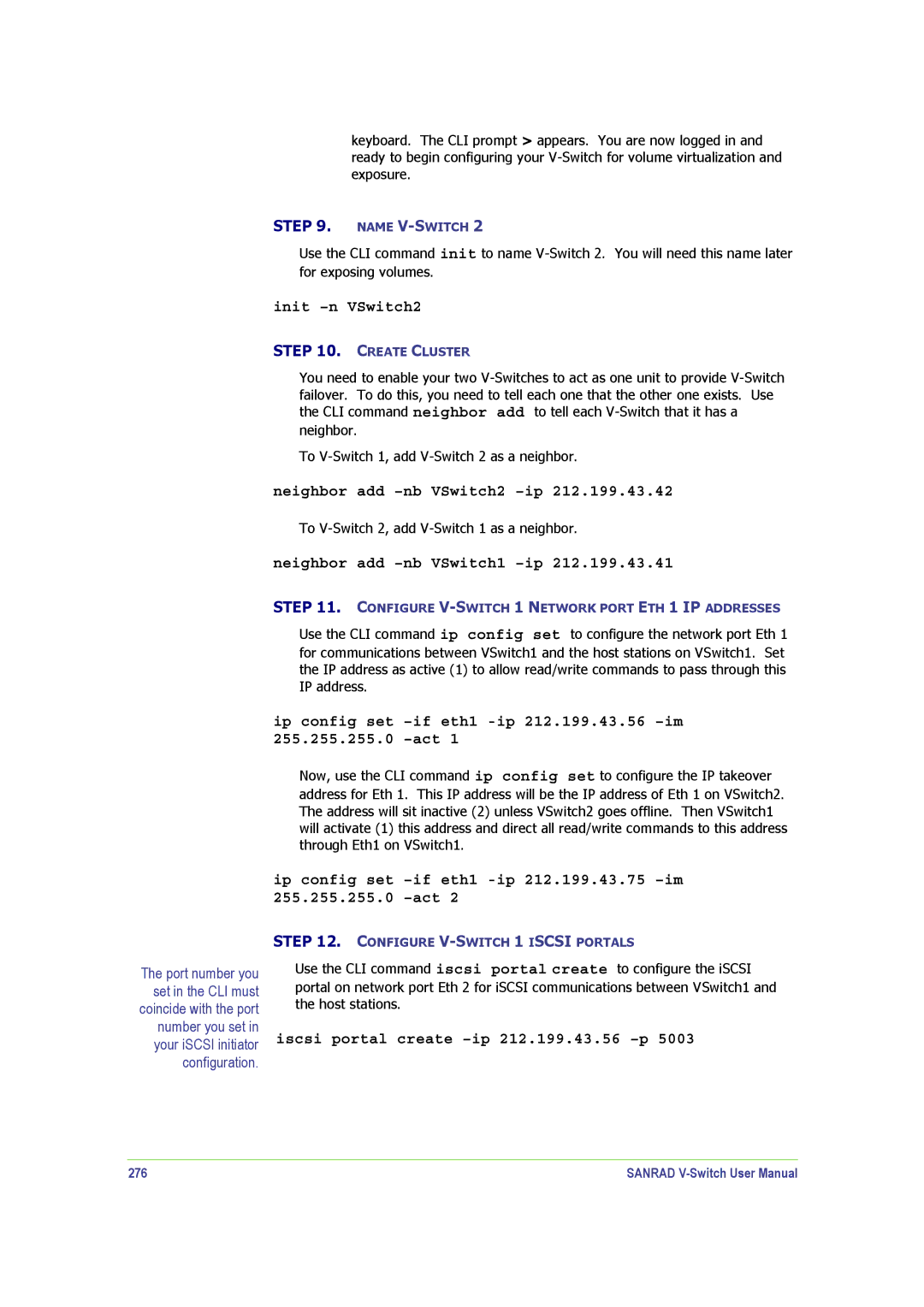keyboard. The CLI prompt > appears. You are now logged in and ready to begin configuring your
STEP 9. NAME
Use the CLI command init to name
init –n VSwitch2
The port number you set in the CLI must coincide with the port number you set in your iSCSI initiator configuration.
STEP 10. CREATE CLUSTER
You need to enable your two
neighbor.
To
neighbor add –nb VSwitch2 –ip 212.199.43.42
To
neighbor add –nb VSwitch1 –ip 212.199.43.41
STEP 11. CONFIGURE
Use the CLI command ip config set to configure the network port Eth 1
for communications between VSwitch1 and the host stations on VSwitch1. Set the IP address as active (1) to allow read/write commands to pass through this IP address.
ip config set
Now, use the CLI command ip config set to configure the IP takeover
address for Eth 1. This IP address will be the IP address of Eth 1 on VSwitch2. The address will sit inactive (2) unless VSwitch2 goes offline. Then VSwitch1 will activate (1) this address and direct all read/write commands to this address through Eth1 on VSwitch1.
ip config set
STEP 12. CONFIGURE
Use the CLI command iscsi portal create to configure the iSCSI
portal on network port Eth 2 for iSCSI communications between VSwitch1 and the host stations.
iscsi portal create –ip 212.199.43.56 –p 5003
276 | SANRAD |
